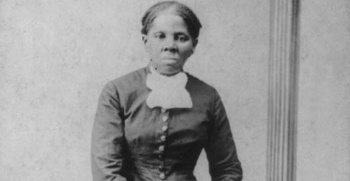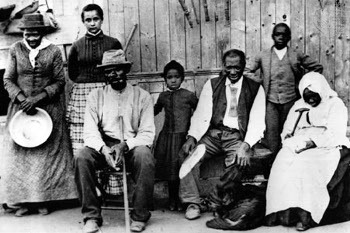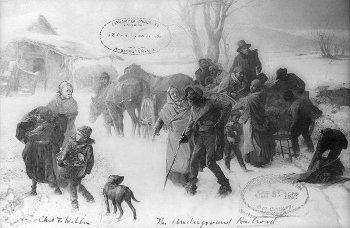February is Black History Month, a great time to learn about pivotal people in the history of African Americans, like Harriet Tubman. Harriet Tubman was an American abolitionist, humanitarian and heroine who helped free African American slaves with the use of the Underground Railroad. Find out more about Harriet Tubman in her Kidzworld Bio.
 Harriet Tubman was treated badly as a slave and eventually escaped
Harriet Tubman was treated badly as a slave and eventually escaped
Araminta from Maryland
Harriet Tubman was born Araminta Ross, (or “Minty”), the daughter of slaves who worked in two different plantations in Maryland. Historians believe she was born in 1822, but the exact year of her birth is uncertain since people then didn’t keep records the way we do now. At this time African Americans were not recognized in America as people with equal rights. They weren’t allowed access to education and information or allowed to make decisions about how or where they worked. They were bought and sold or inherited as slaves, but in the years that followed many people would start to realize and argue this was a gross injustice and was inhumane.
 She first started using the Underground Railroad for her own escape, then came back for family members and others.
She first started using the Underground Railroad for her own escape, then came back for family members and others.
Minty had three sisters and one brother, and her mother Harriet struggled to keep her family together in the face of slavery. The plantation owner she worked for sold three of her daughters, but she hid her son before he could sell him as well. It was this kind of courage that inspired Minty later in life to fight against slavery. Minty had a difficult childhood, starting work at just six years old as a nanny for a small baby. Her “master” hired her out to different places working on different farms where she was treated badly, whipped and forced to work even when sick, and as a little girl she was terribly homesick working on other plantations. Due to a life-altering injury to the head caused by refusing to help a plantation owner chase down a slave (she was hit in the head with a heavy object), she was considered not worthy of buying even when her master tried to sell her.
Love And Escape
Many African Americans were freed in the following years, including Minty’s father who had earned his freedom. In fact many African Americans had a mix of free and enslaved members in the same family. Slave owners could stipulate in their wills to set their slaves free, or slaves could earn their freedom. Minty met a free man, John Tubman, and married him and changed her name to Harriet, and around the same time became deeply religious.
Due to being ill Harriet’s master could not sell her, and after he died his widow would have broken up her whole family by selling them. Harriet’s husband tried to dissuade her, but she and two of her brothers decided to escape and did successfully, but her brothers had a change of heart and forced her to return with them. Undaunted she escaped again: "There was one of two things I had a right to," said Harriet "liberty or death; if I could not have one, I would have the other."
 When helping other slaves escape Harriet would often wear costumes and used safe houses and secret routes
When helping other slaves escape Harriet would often wear costumes and used safe houses and secret routes
The Underground Railroad
Harriet escaped using a well-hidden network of safe houses and secret routes that only abolitionists (people who wanted to get rid of slavery) and freed African Americans knew about. At this time the Northern states had become free and the antislavery movement was increasing. In the years after she escaped Harriet returned to Maryland to help smuggle out as many as 70 people. At first she came back just for her nieces and grandnieces, but as an escaped slave she had to be hidden by people she trusted so she could guide others out and often had close calls with former owners. She used any disguise available to elude capture and help other slaves at great risk to her own safety. Even if you made it to Northern States an owner could still come after you and reclaim you, so many used the passages to go all the way to Canada. She often took people in the dead of winter and underwent at least 13 different expeditions.
Harriet became politically active and when The Civil War broke out in 1861, she knew that a victory for the Union could mean the end of slavery. She worked as a source of information for the abolitionists showing the weak points of plantations. Harriet was the first woman to lead an armed assault during the war so she could help free and rescue slaves in the plantations near the Combahee River.
Have Your Say
Are you celebrating Black History Month? What do you think of Harriet Tubman? Let us how in the comments section below!
Related Stories
- Black History Month: Field Trips
- Black Entertainment History Timeline
- Black History Month
- More Holiday Articles

































